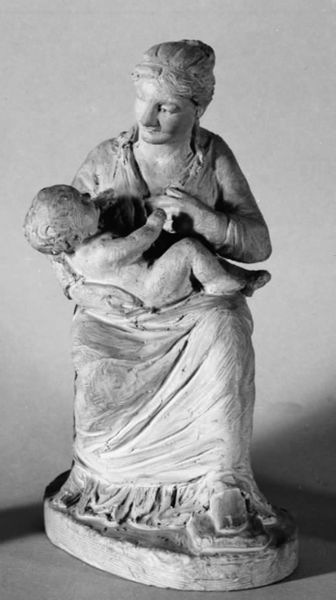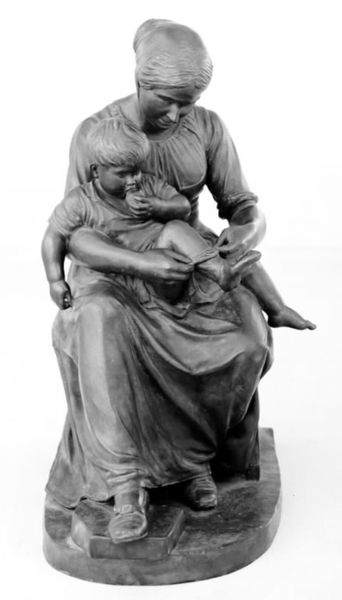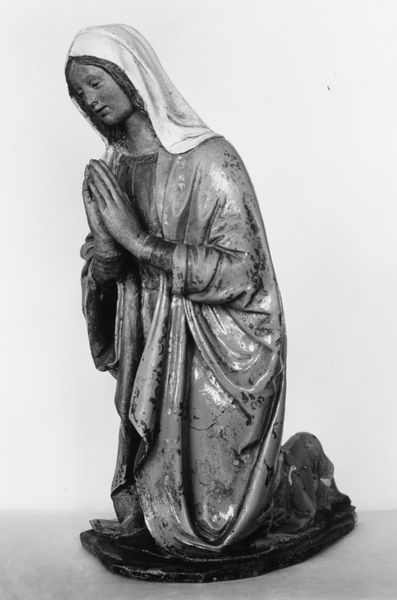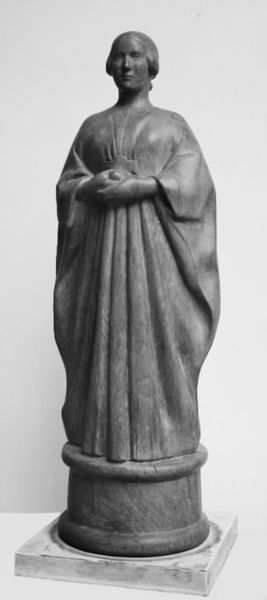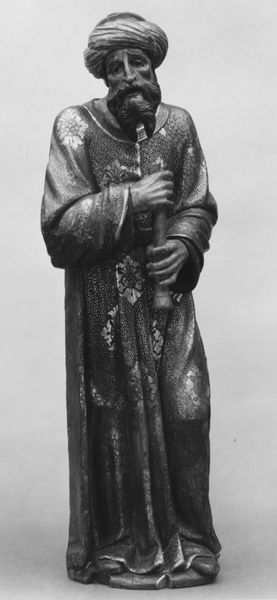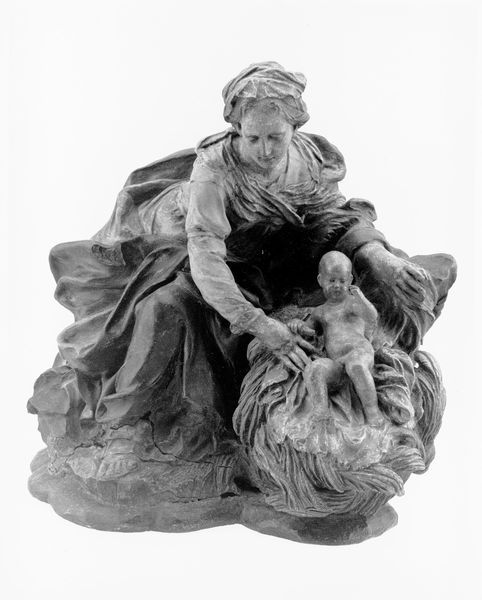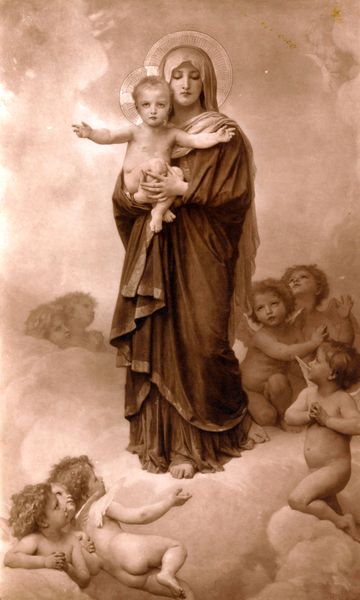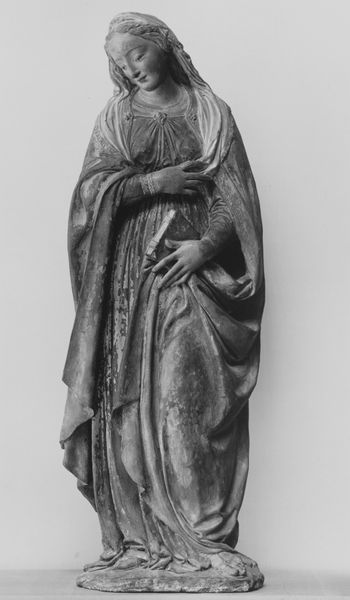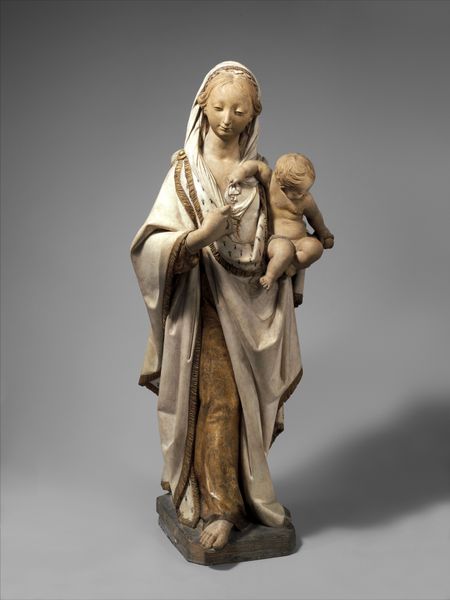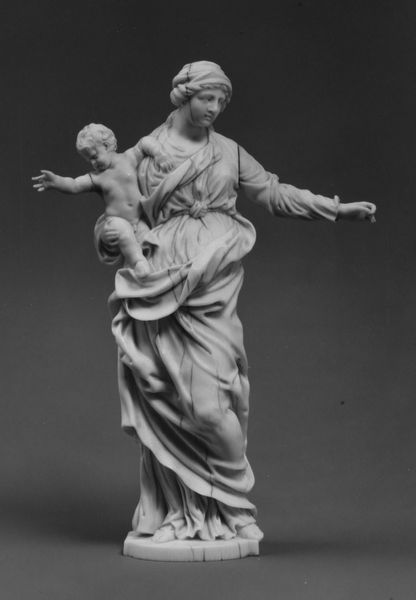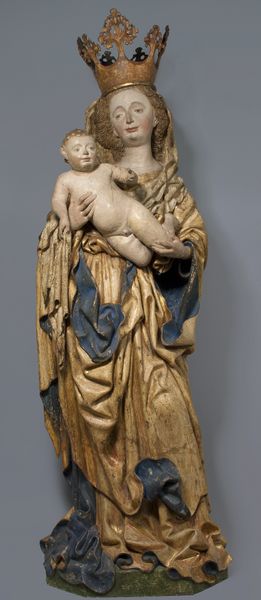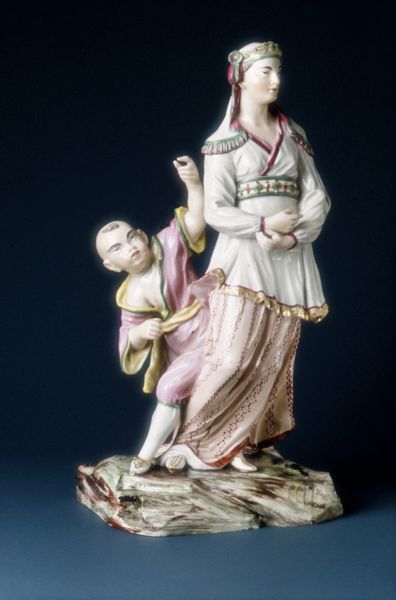
sculpture, wood
#
portrait
#
baroque
#
sculpture
#
figuration
#
sculpture
#
black and white
#
wood
#
decorative-art
Dimensions: Height: 18 3/4 in. (47.6 cm)
Copyright: Public Domain
Giuseppe Mazza created this terracotta sculpture of the Madonna and Child in Bologna, Italy, sometime around the late 17th or early 18th century. During this period, the Catholic Church was a dominant force, using art to reinforce religious doctrine and inspire piety. Mazza's sculpture exemplifies this, presenting the Virgin Mary as a maternal figure, tenderly cradling the infant Jesus. The use of terracotta, a humble material, suggests the Church's desire to connect with the common people, while the idealized forms evoke divine perfection. Bologna itself was a significant artistic center, home to a renowned academy that promoted classical ideals. Mazza, trained in this environment, demonstrates a mastery of form and composition, though his work also exhibits a dynamic energy characteristic of the Baroque style. By studying the archives of the Academy we can gain a deeper understanding of Mazza’s artistic influences and the broader cultural context in which he worked. The meaning of the sculpture, then, is something that is contingent on social and institutional context.
Comments
No comments
Be the first to comment and join the conversation on the ultimate creative platform.
